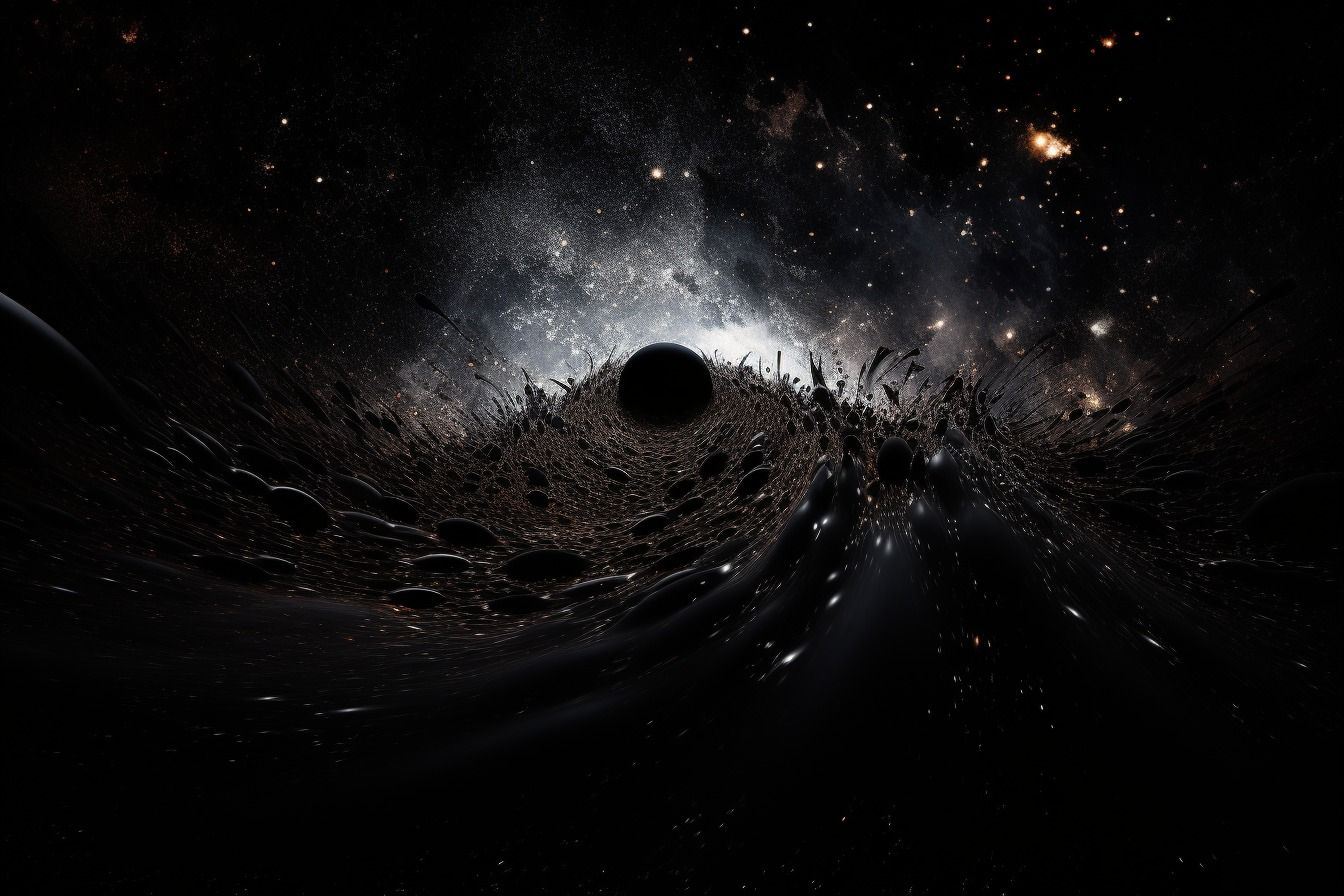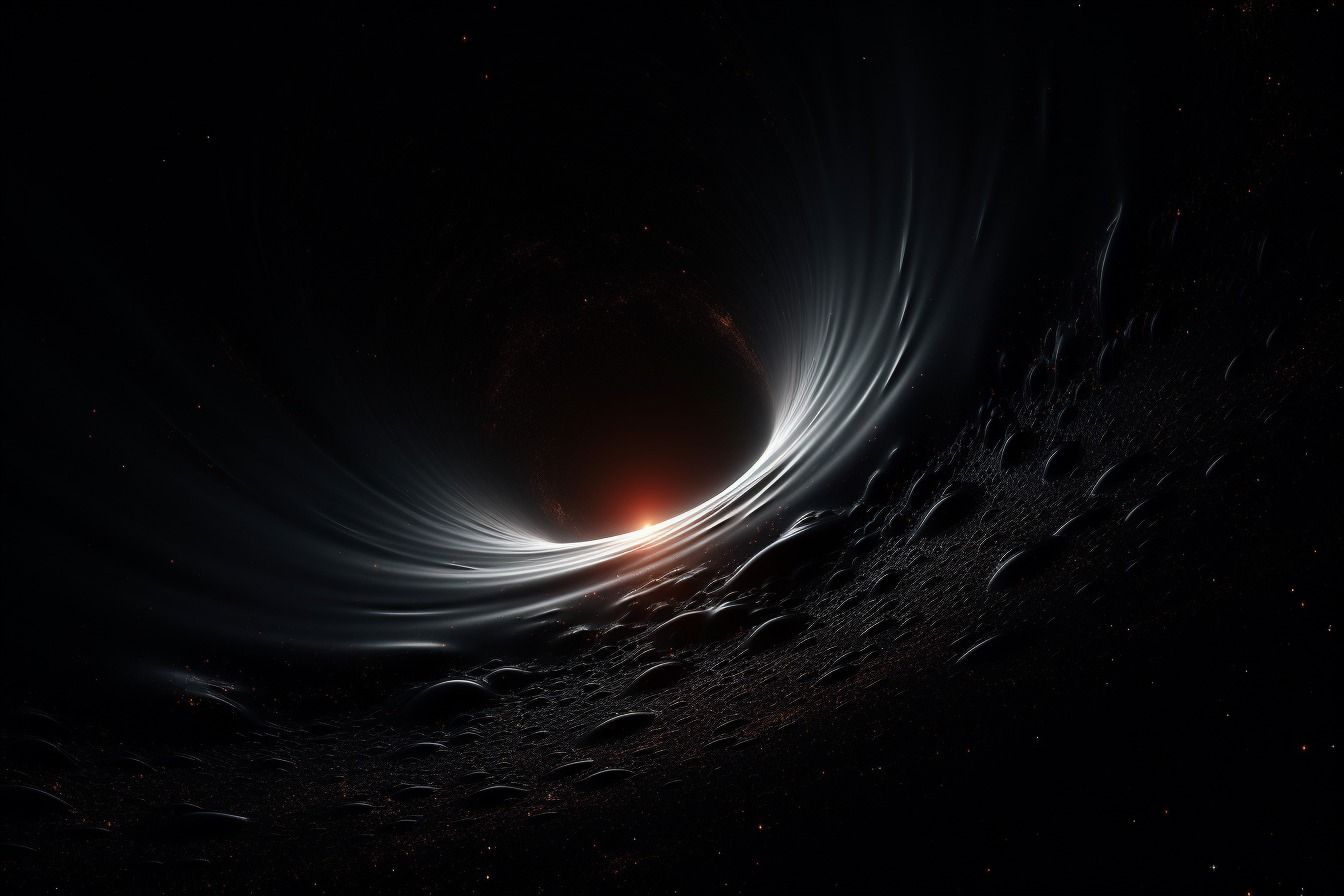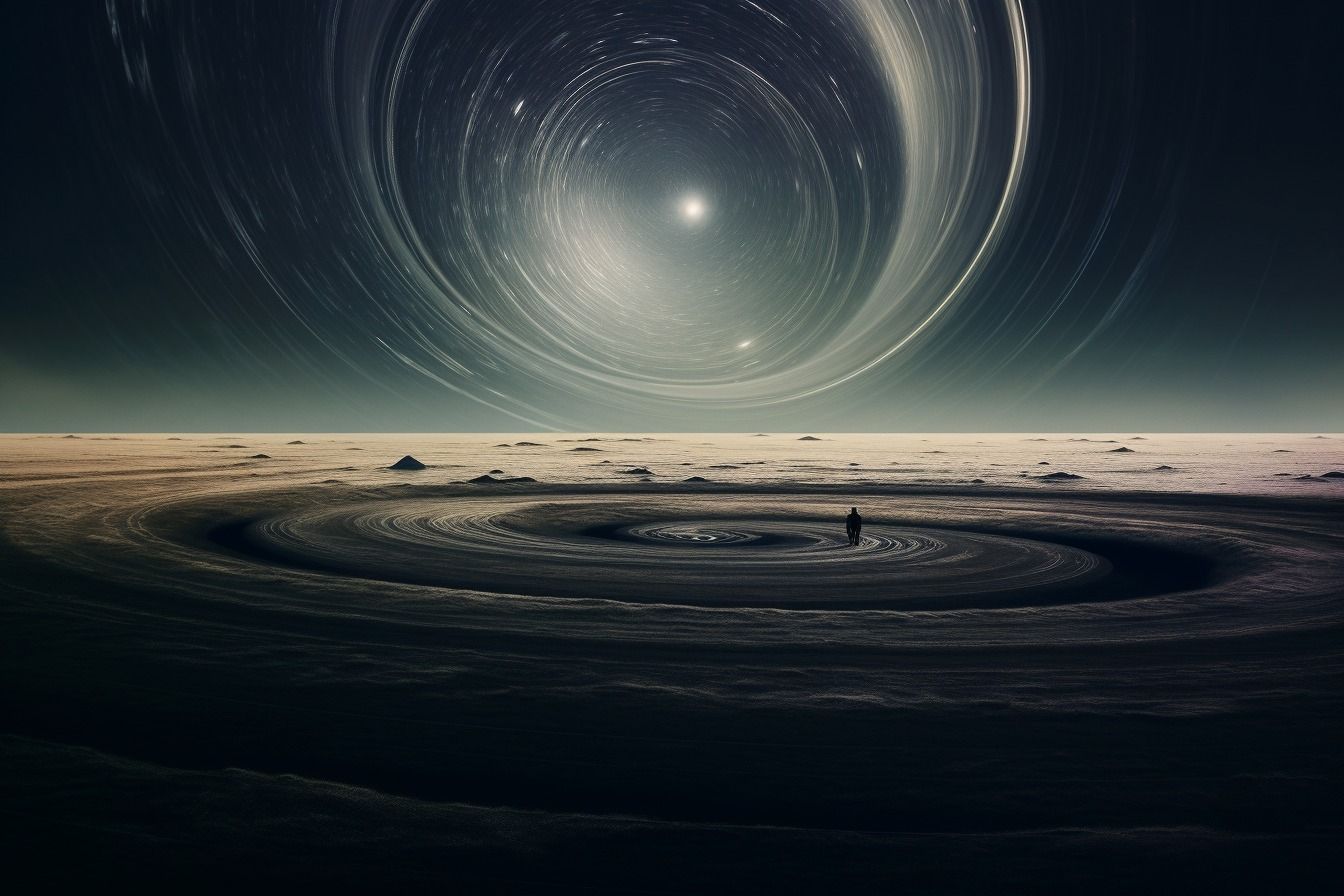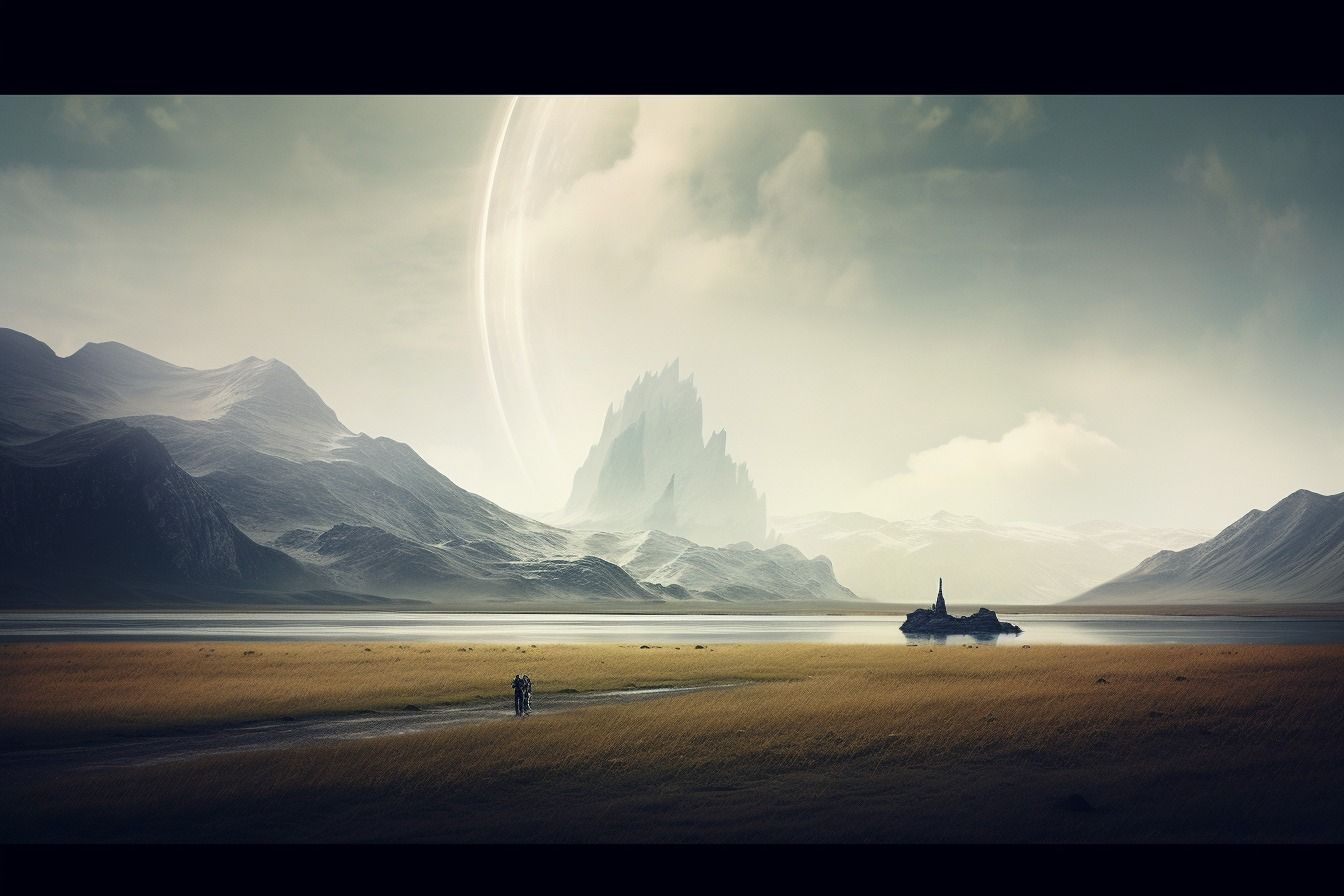Relativity vs. quantum mechanics in black holes: The boundary between science and science fiction
While science fiction have often distorted the properties of black holes, it has just as often managed to capture the intriguing nature of these astrophysical objects

A black hole is formed by anything whose mass is concentrated below a certain radius. This radius, also known as the Schwarzschild radius or event horizon, depends on the mass, but the size is extremely small: in the case of the Sun (which has a radius of 700,000 km), it is just under three kilometers.
Between science and science fiction
Until the 1970s, when they were first identified in binary systems, the impossibility of directly observing a black hole meant that they remained a hypothesis for science. Then they were identified by the emission of X-rays and gamma rays from the companion star's material, which was accelerated and heated by the fall toward the black hole. Of course, science fiction did not wait for official verification. While the literature and especially the science fiction filmography have often distorted the properties of black holes for plot development purposes, they have just as often managed to capture the intriguing nature of these astrophysical objects, to convey it correctly, and to integrate it skillfully into stories.
The different interpretation of the nature of black holes
Interpreting black holes in the context of both general relativity and quantum mechanics reveals a fundamental tension between these two pillars of modern physics. This tension arises because general relativity, which describes the behavior of gravity and spacetime on large scales, and quantum mechanics, which governs the behavior of particles and forces on the smallest scales, have yet to be fully reconciled into a single, coherent framework known as a theory of quantum gravity. As a result, black holes serve as fascinating test cases in which the conflict between these two theories becomes apparent.

Interpretation within General Relativity
Let us start from the "realm" of general relativity and "classical" physics. In general relativity, black holes are solutions to Einstein's equations that describe the curvature of spacetime in the presence of extremely massive objects. According to this theory, a black hole forms when a massive star collapses under its own gravity, reaching a point where its density becomes infinitely high - a singularity - and spacetime itself becomes so curved that nothing, not even light, can escape beyond a region known as the event horizon. Objects approaching the event horizon experience time dilation, i.e. time slows down for them relative to an observer farther away from the black hole. This effect has been confirmed by observations of light from matter falling into a black hole, which is shifted toward the red end of the spectrum. In this "classical" view, black holes are thought of as eternal, unchanging objects with an infinite gravitational pull.
Interpretation within Quantum Mechanics
Quantum mechanics, on the other hand, deals with subatomic particle behavior and forces. In the context of black holes, quantum mechanics introduces the concept of Hawking radiation, predicted by physicist Stephen Hawking. The idea is that near the event horizon of a black hole, virtual particle/antiparticle pairs may form. In some cases, one of the particles will fall into the black hole while the other will escape. This process leads to a net loss of mass and energy for the black hole over time, causing it to eventually evaporate. Hawking radiation also raises questions about the conservation of information, as the particles emitted by a black hole contain information about its properties, yet the evaporation process seems to destroy this information. Thus, in the view of quantum mechanics, black holes are not eternal as in relativistic physics.

Black holes in speculative SciFi
The depiction of black holes in science fiction transcends the boundaries of known physics and academic discussion, even as it exploits their potential, motives, and scenarios. Obviously, science fiction makes use of holes within a narrative scenario, often developing stories in contexts where the predictions of the fundamental laws of physics are twisted. These cosmic anomalies, characterized by their extreme gravitational pull, their event horizons, and their potential for the warping of time and space, provide fertile ground for speculative fiction. Writers often exploit the paradoxes of time dilation, gravitational time shifts, and traversable wormholes to create intricate plots exploring alternate realities, time travel, and manipulating causality.
Between end and beginning
In science fiction stories, the event horizon concept of a black hole, the point beyond which nothing can escape, is often a symbol of the point of no return. Characters may recklessly venture close to the event horizon. This reflects humanity's relentless exploration of the limits of knowledge and the consequences that can follow. But it also symbolizes ending, dying, and being transformed. Science fiction's interactions with black holes range from catastrophic to transcendent. On the one hand, black holes are portrayed as destructive forces that are capable of swallowing up entire planets, stars, and even civilizations. These scenarios evoke a sense of existential dread. They reveal humanity's vulnerability to vast cosmic forces beyond our control. In other cases, they are passages, bridging to new worlds and exploring the deeper possibilities of existence.

Interstellar between science and fiction
But is a robust collaboration between theoretical physics and science fiction possible? Nolan's Interstellar, for instance, is more than just science fiction. The jaw-dropping events we witness in the movie are a concrete and scientifically accurate representation of what humans might face in a hypothetical journey through space-time, thanks to the advice of astrophysicist and Nobel laureate Kip Thorne. Science in Interstellar encompasses all four fundamental fields of science: Newtonian, relativistic, quantum, and quantum gravity; from the worm holes to the fifth dimension.
Suggested films
- Interstellar (2014) - Directed by Christopher Nolan.
- Event Horizon (1997) - Directed by Paul W
- Sunshine (2007) - Directed by Danny Boyle.
- The Black Hole (2006) - Not to be confused with the Disney film of the same name, this TV movie involves a physics professor investigating the disappearance of his wife and her colleagues through a black hole.
Suggested books
- Black Hole by Charles Burns (Graphic Novel, 1995-2005) - This graphic novel explores a mysterious sexually transmitted disease that causes bizarre mutations among a group of teenagers in a suburban setting.
- The Black Hole War: My Battle with Stephen Hawking to Make the World Safe for Quantum Mechanics by Leonard Susskind (Non-fiction, 2008) - While not a work of fiction, this book is a fascinating account of a scientific dispute between physicists over the nature of black holes and information theory.
- Tau Zero by Poul Anderson (1970) - This novel follows a starship crew as they embark on a journey through space in a ship that can approach the speed of light, but due to relativistic effects, they end up facing the event horizon of a black hole.
- Hawking's Hawking: A Novel by George P. Hansen (2006) - This novel is a mix of science fiction and fantasy, centered around a black hole and the legacy of Stephen Hawking.
- The Algebraist by Iain M. Banks (2004) - While not entirely focused on black holes, this novel is set in a universe where advanced civilizations use wormholes to travel, and it features discussions and events related to exotic cosmic phenomena.
